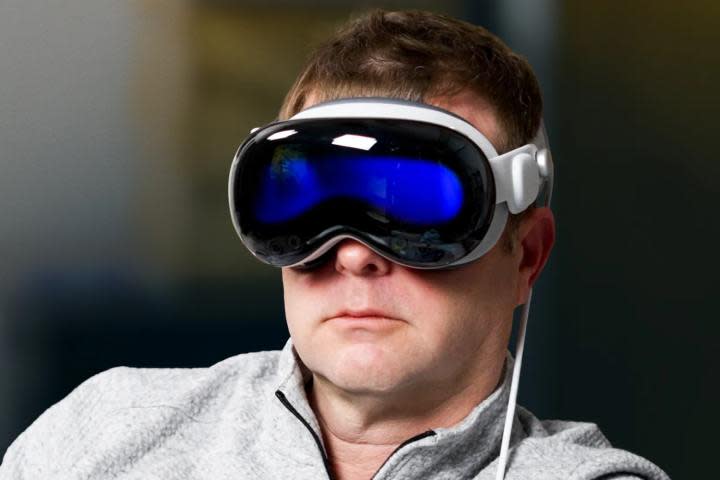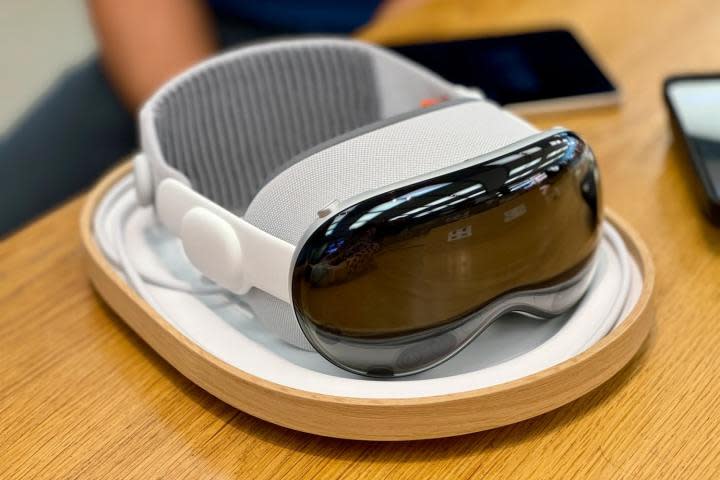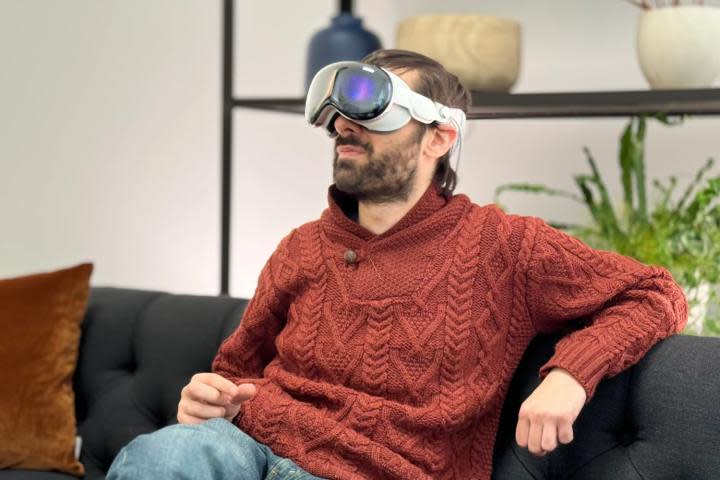How Apple plans to save the Vision Pro

It’s no secret that Apple’s Vision Pro headset is the best advanced headset on the market, with powerful specs and an immersive experience that no rival can truly match. It’s also no secret that Apple has struggled to sell its device, given its $3,499 price tag puts it way out of reach of most consumers. Apple reportedly has a plan to turn things around, though — yet it might not involve a Vision Pro headset at all.
According to the latest Power On newsletter from Bloomberg reporter Mark Gurman, Apple plans to launch a cheaper Vision Pro in late 2025 at the earliest, followed by a second-generation mainstream Vision Pro around late 2026. After that is a set of much-discussed augmented reality (AR) glasses, although Gurman believes these are still many years away.
Yet there are problems with the first two products in that roadmap. The cheaper Vision Pro will have to make significant cuts to bring the price down, but doing so might make it lose the “technological advances that made the Vision Pro superior to the competition,” Gurman says.
The Vision Pro 2, meanwhile, is unlikely to be a major change from the original model and thus might suffer from the same pitfalls: a high price and an overly niche appeal. Work on that one has reportedly been discontinued for now to focus on the cheaper model.

The AR glasses, on the other hand, could seriously shake things up. They are the “holy grail for the tech industry,” Gurman believes, with the journalist adding: “That product seems to have the most promise for augmenting — and perhaps ultimately replacing — the iPhone.”
Augmented reality glasses also fit in with Apple’s long-held desire to have its technology recede into the background so that the experience can shine — something that both Steve Jobs and Jony Ive obsessed over. People don’t buy a VR headset for the device itself; they buy it for the experience.
That’s something a lightweight pair of glasses would be able to achieve so much more easily than the current bulky, heavy Vision Pro. If Apple can realize that dream, it might be the shot in the arm its VR products desperately need, reigniting interest in the Vision Pro while offering the purest example of what Apple initially set out to achieve with its VR and AR devices.
What’s the solution?

While AR glasses may be the product that saves the Vision Pro, Gurman raises questions over whether Apple has the stomach for the fight. “The big question,” Gurman says, “is whether Apple is willing to invest hundreds of millions of dollars annually developing new technologies for future headsets and glasses — with little prospect for a near-term payoff.”
It will require patience in an industry not exactly known for this quality. Even Apple, which has more funds and patience than most, might not have the endurance for it — just look at the now-canceled Apple Car, a project that Apple poured over $10 billion into without anything to show for it.
That said, Gurman doesn’t seem too worried: “Given that the Vision Products Group has thousands of employees and continues to hire, my sense is that Apple is willing to keep spending for another several years or so. That would let it at least prove whether the AR glasses are feasible.”

It seems unlikely that Apple would give up its cherished AR dream easily, especially when so much money has already been spent on research and development (and when so much money stands to be made if the product is successful). When realizing the Vision Pro’s original ideas might come down to the AR glasses, there’s a huge amount at stake for Apple.
But with these glasses still many years away, the short-term key for Apple is the cheaper Vision Pro. Here, the company can take solace (and learn lessons) from its past efforts. The iPhone needed the App Store and faster 3G connectivity to really take off, while the Apple Watch had to be refocused on health and fitness before it became a success story. Now, some people may be looking at the Vision Pro in the same way.
Does the Vision Pro need to be refocused? Does Apple simply need to bring the price down? Or do the mooted AR glasses need to finally arrive on the scene? Only time will tell what the solution is, but one thing is for sure: the AR glasses can’t come quickly enough.


